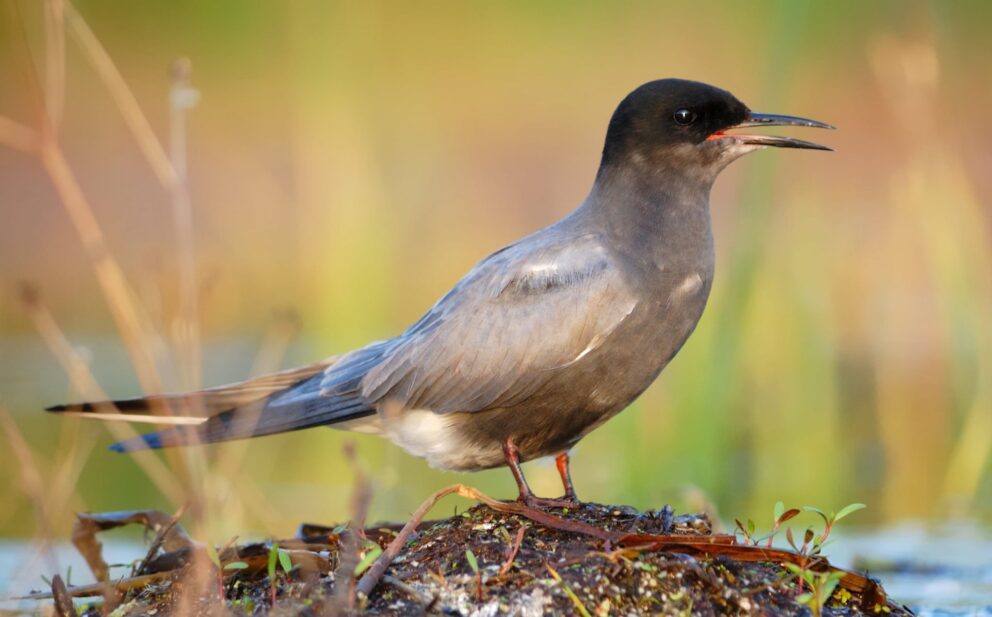- SCIENTIFIC NAME
- Chlidonias niger
- CLASSIFICATION
- Bird
- LIFE SPAN
- 2-10 Years
- SIZE
- 9-14” | 0.06-0.12lbs
- STATE CONSERVATION STATUS
-
- Priority Species
- FEDERAL CONSERVATION STATUS
- Least Concern
- GAME STATUS
- Non-Game
- GAME TYPE
- None
- Washoe
- Humboldt
- Pershing
- Churchill
- Mineral
- Lyon
- Douglas
- Carson City
- Storey
- Elko
- Lander
- Eureka
- White Pine
- Esmeralda
- Nye
- Lincoln
- Clark
Habitat & Range
Black Terns migrate throughout the entire state of Nevada. They have been recorded breeding in the extreme northern portion of the state.
- Desert Playas
- Lakes and reservoirs
- Marsh
Threats
- Habitat Degradation
- Human Development
- Invasive Species
Natural History
Black Terns forage along the water’s surface of marshes and flooded fields in search of small fish or insects. They are not the type of birds to dive into the water, and instead skim the surface for small fish living just below the surface, or insects flying just above the water. Males often fly with fish in their mouth to attract females. They breed in colonies, often establishing nests of two to four eggs in floating vegetation. Juvenile Black Terns will remain in their wintering habitat for their first year, not making the migration to breeding grounds until their second year.
Fun Facts
The oldest recorded Black Tern was more than eleven years old.














